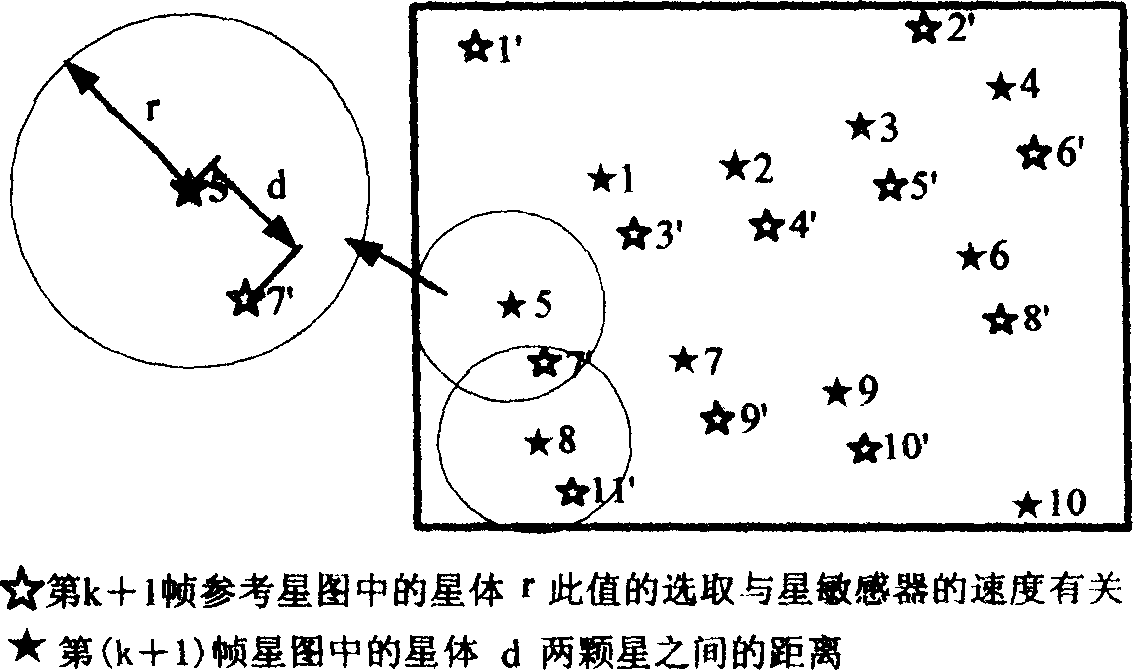Fast tracting method of star sensor
A star sensor and star tracking technology, applied in the field of astronomical navigation, can solve the problems of high computational overhead, meaningless, and unnecessary in real-time implementation, and achieve the effects of shortening matching time, computing time, and matching times.
- Summary
- Abstract
- Description
- Claims
- Application Information
AI Technical Summary
Problems solved by technology
Method used
Image
Examples
Embodiment
[0049] The adoption of the above three improvements greatly improves the speed of the existing tracking algorithm. In this regard, a simulation test was carried out on a Celeron 900(m) machine. The specific method of testing is as follows:
[0050] (1) The partition star table used in the simulation program is a partition star table that divides the sky into 486 blocks. The threshold δ for mapping is set to 13. Below are the results of the software simulation test.
[0051] (2) Set the initial attitude (pitch angle 70°, yaw angle 20°, roll angle 0°) and final attitude (pitch angle 80°, yaw angle 30°, roll angle 0°) of the star sensor. In the tracking process of the simulated star sensor from the initial attitude movement to the final state, there are 139 steps to track. Each step will generate a star map to simulate the star map collected by the star sensor according to the attitude of each step, and then use the reference star map of the previous frame to track and identi...
PUM
 Login to View More
Login to View More Abstract
Description
Claims
Application Information
 Login to View More
Login to View More - R&D
- Intellectual Property
- Life Sciences
- Materials
- Tech Scout
- Unparalleled Data Quality
- Higher Quality Content
- 60% Fewer Hallucinations
Browse by: Latest US Patents, China's latest patents, Technical Efficacy Thesaurus, Application Domain, Technology Topic, Popular Technical Reports.
© 2025 PatSnap. All rights reserved.Legal|Privacy policy|Modern Slavery Act Transparency Statement|Sitemap|About US| Contact US: help@patsnap.com



